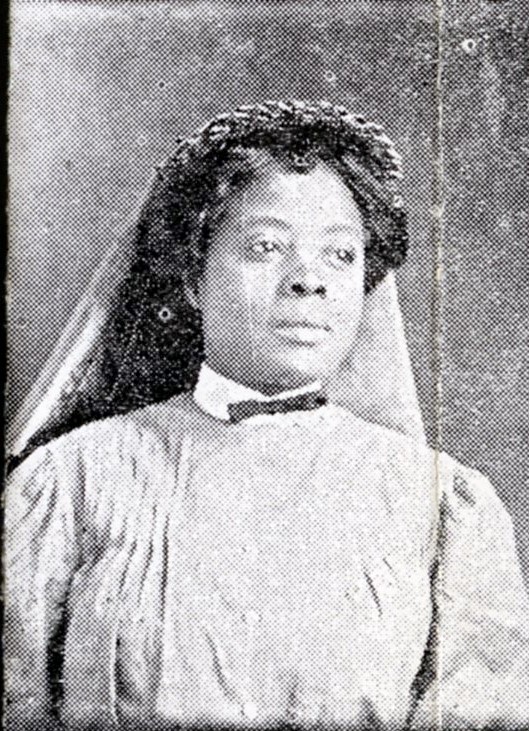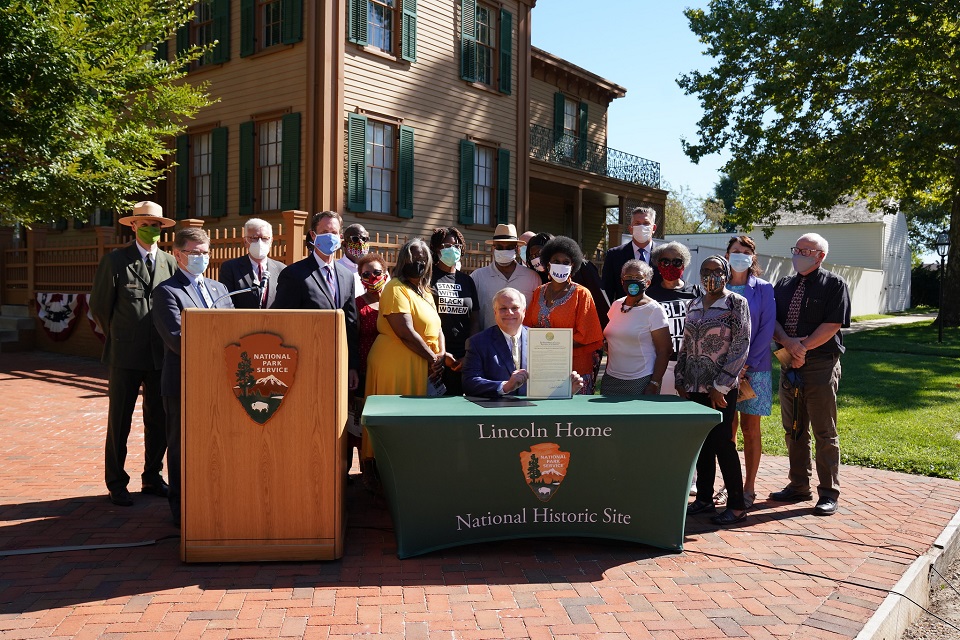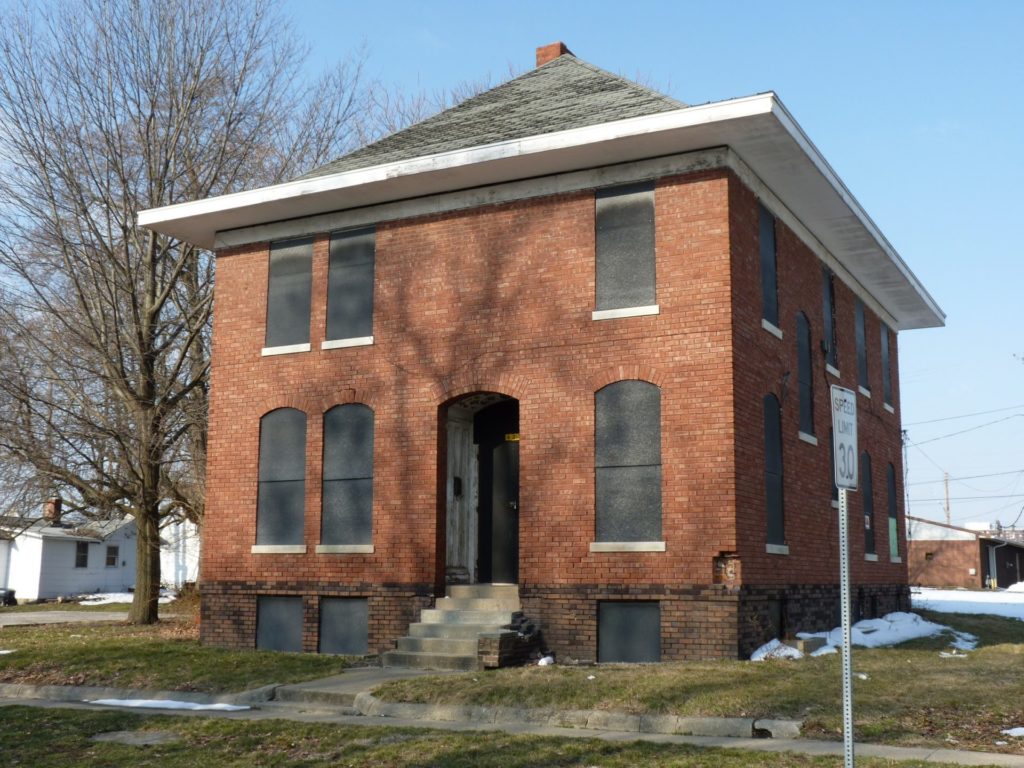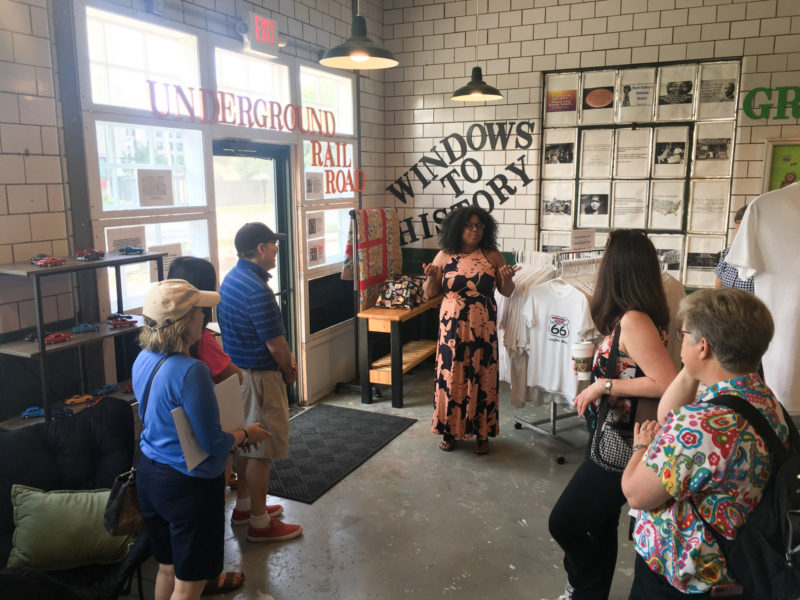(Photo: Stacy Grundy gives a tour of Route History in Springfield for Landmarks Illinois Board members.)
MARCH 16, 2021
By Frank Butterfield, Director of Landmarks Illinois’ Springfield Office
(This article was originally published in the February 2021 edition of The Arch newsletter.)
Springfield, Illinois, is widely known as the home of Abraham Lincoln. You can run the Lincoln Presidential Half Marathon, stay at the Lincoln Hotel and visit both Lincoln libraries (presidential and local). Many local preservation initiatives have also been viewed through the lens of Lincoln, with buildings described as “associated with Lincoln” or simply “Lincoln era.”
We should commemorate and honor the 16th president’s legacy, but not let it overshadow or preclude a more full and nuanced story of the capital city. Part of Lincoln’s story is the struggle for the emancipation of those who were enslaved. Our advocacy efforts must equally elevate the legacy of all those who fought for that cause and continue to fight for civil and human rights of all Americans.
Springfield’s Black community has not been afforded equal access to resources and platforms in their efforts to save historic places. Currently, community leaders are at work to change this dynamic and promote places associated with Black history in Springfield.

(Photo: Eva Carroll Monroe, founder of the Lincoln Colored Home)
In 2019, Dr. Stacy Grundy, Dr. Gina Lathan and Kenneth Lockhart opened Route History in a former Texaco gas station for visitors to “learn of the tragedy, resilience and excellence of Black people on Route 66 and in Springfield.” The group also seeks to raise awareness and funds for the Lincoln Colored Home, an orphanage for Black children founded by Eva Carroll Monroe that Landmarks Illinois listed on the Most Endangered list in 2013. (We featured Route History in this newsletter one year ago today. You can read the feature in our February 2020 edition of The Arch.
Teresa Haley, president of the Springfield chapter of the NAACP, has led the charge to protect and commemorate the archaeological site of the 1908 Race Riot. The NAACP worked with Landmarks Illinois and the Faith Coalition for the Common Good to successfully avoid the destruction of this nationally significant site as part of a railroad consolidation project. A 2019 U.S. Department of Interior report found it suitable for designation as a National Monument.

(Photo: The Race Riot Site in Springfield was named to the NPS African American Civil Rights Network at a Ceremony at the Lincoln Home. Courtesy DOI, Tami Heilemann photo.)
Preservation efforts continue at the Ambidexter Institute (listed on Landmarks Illinois’ 2014 Most Endangered Places in Illinois as the Judge Taylor House) by Tim Rowles of The Springfield Project and at the First Black Firehouse by Ken Page.
All of the historic sites mentioned here are within a one mile radius, presenting an opportunity to create a cultural heritage area. But geographic proximity alone is not what unites these sites.

(Photo: The Lincoln Colored Home in Springfield)
Springfield has a story to tell. It’s a deep and rich story that, yes, includes Lincoln. It also includes the legacy of Eva Carroll Monroe, who founded her orphanage after the three others in town would not house children of color. It includes the lynching of two people during the race riot that led to the founding of the NAACP, which Teresa Haley often refers to as the “oldest and boldest civil rights organization in the country.” It includes the stories of Black children attending the Ambidexter Institute, modeled after Booker T. Washington’s Tuskegee Institute, and so much more.
To properly tell all these stories will take investment and commitment from the preservation and philanthropic community, city, state and federal governments as well as community support. Landmarks Illinois is a committed partner of the people working to save these important places.

